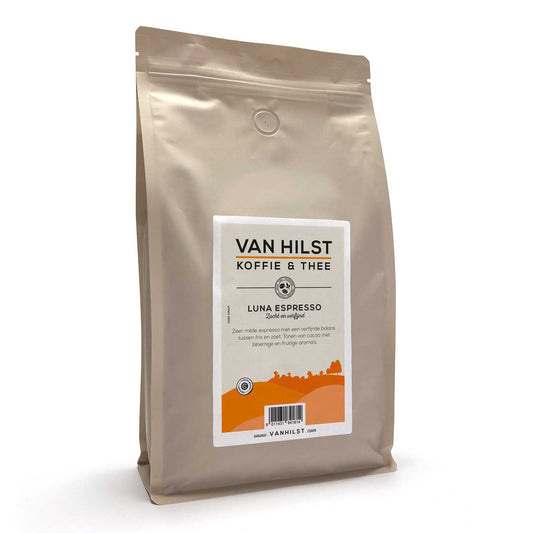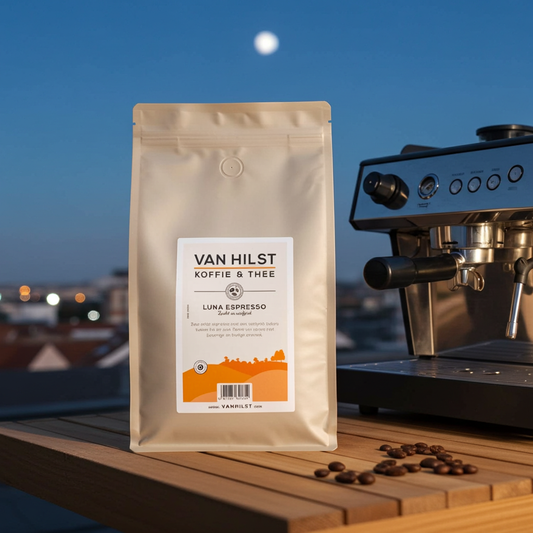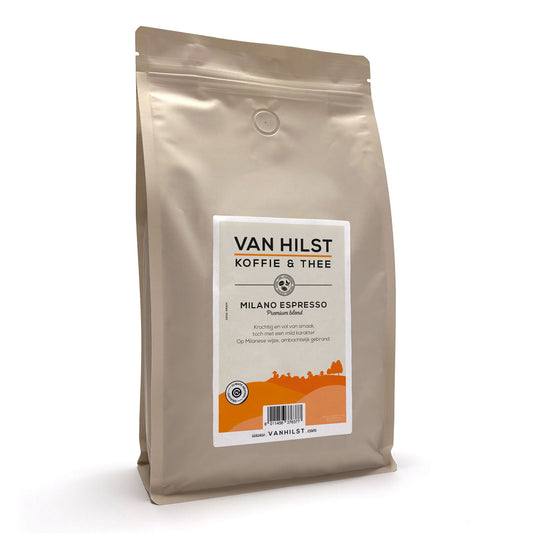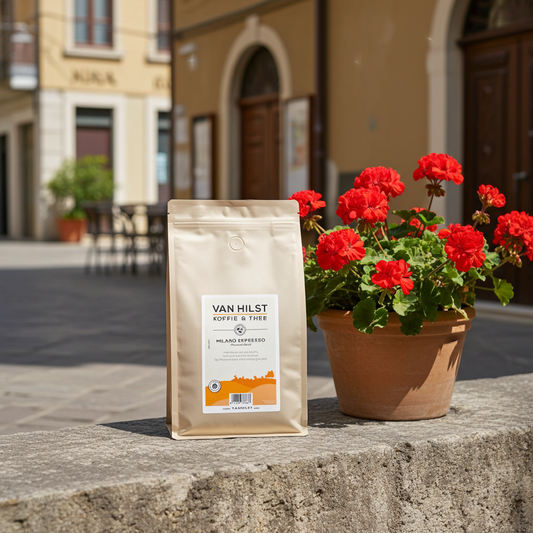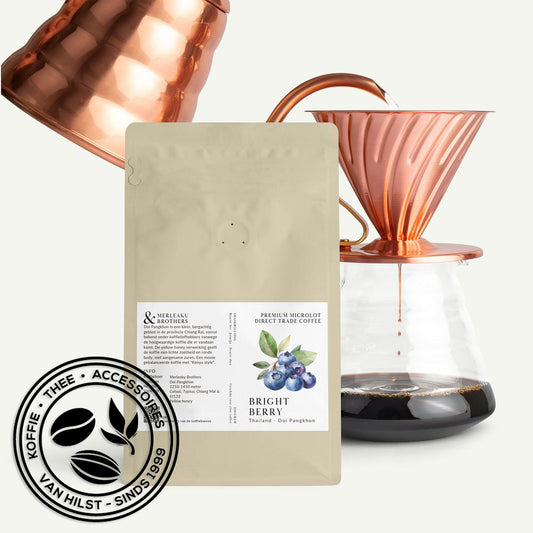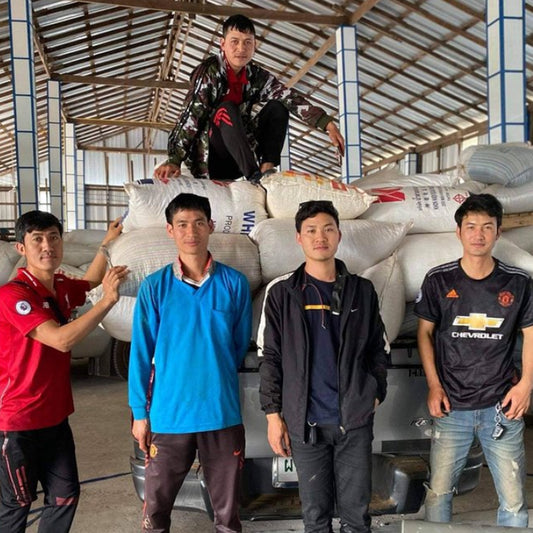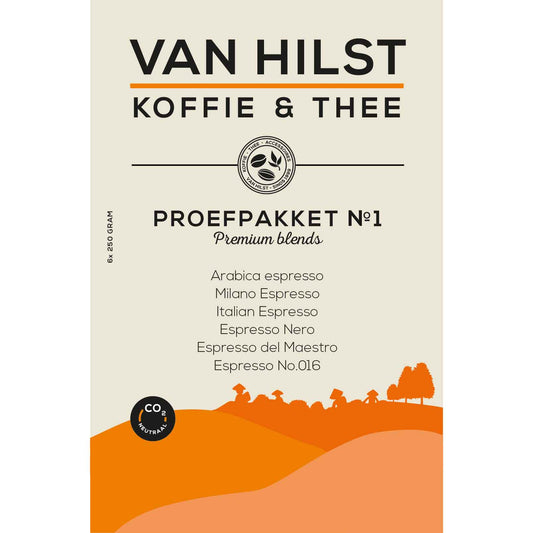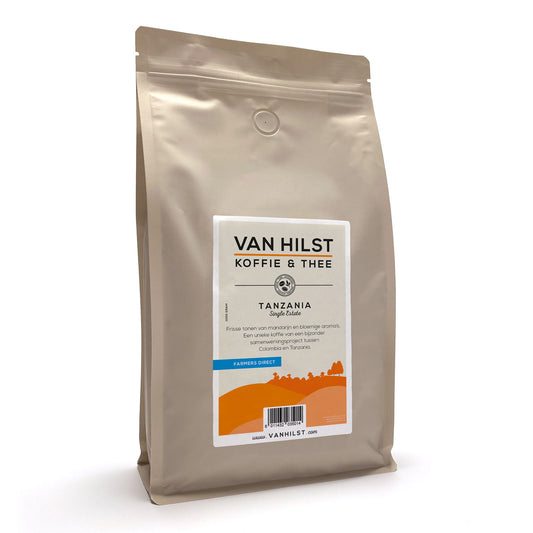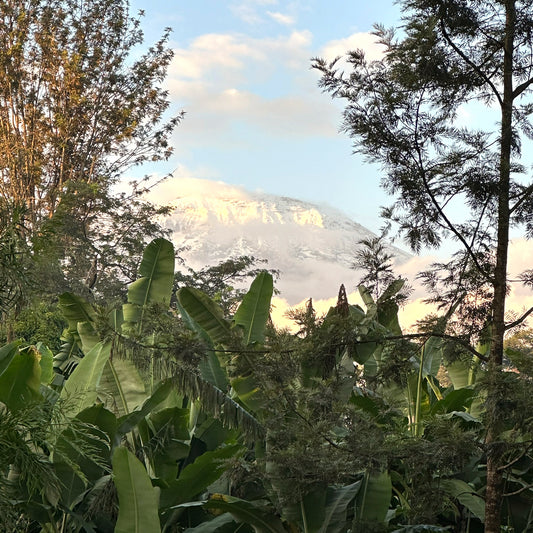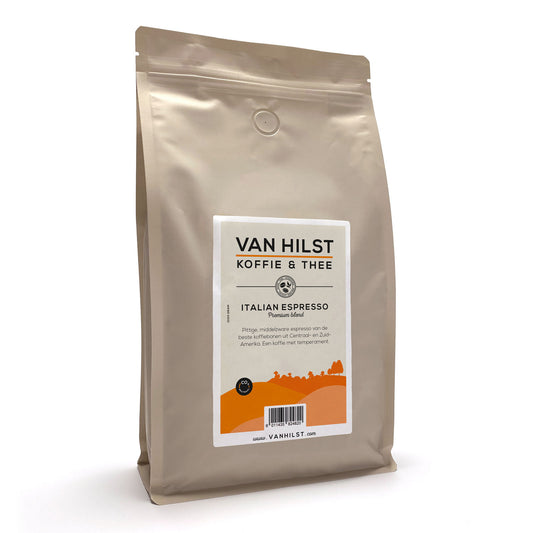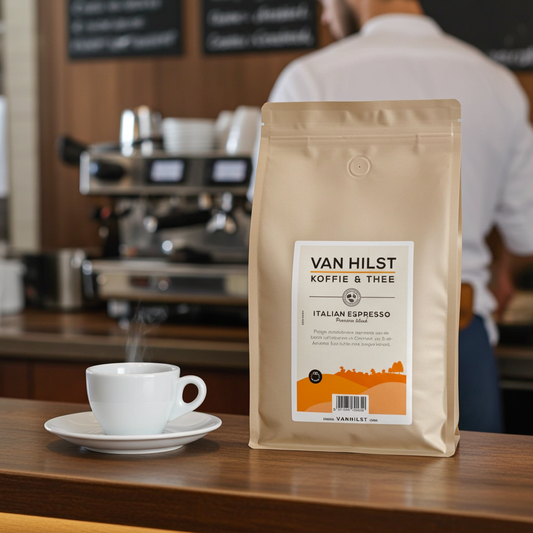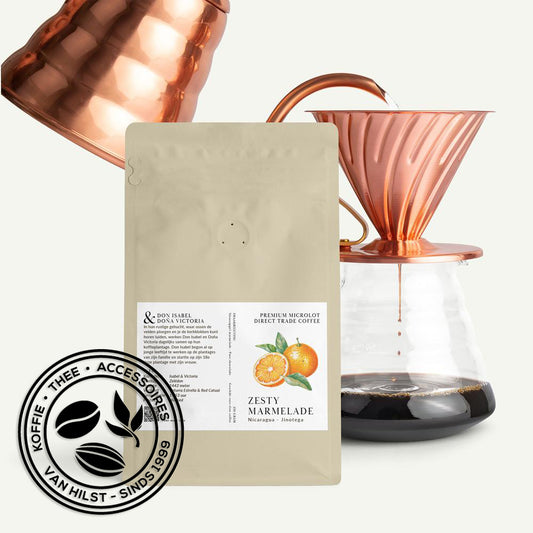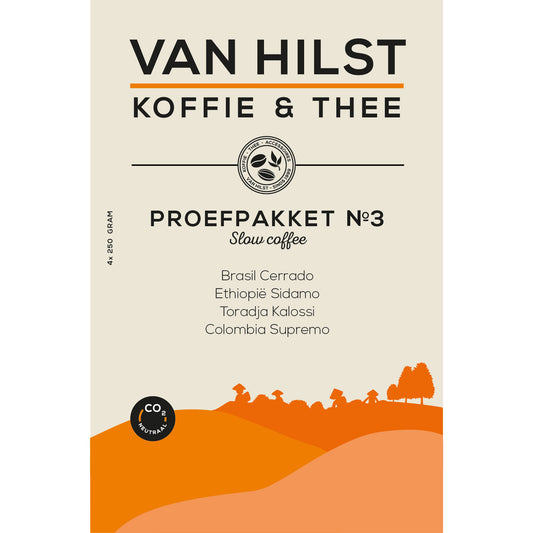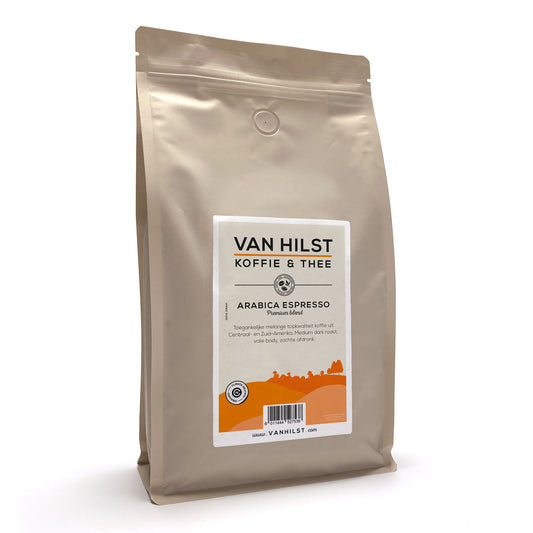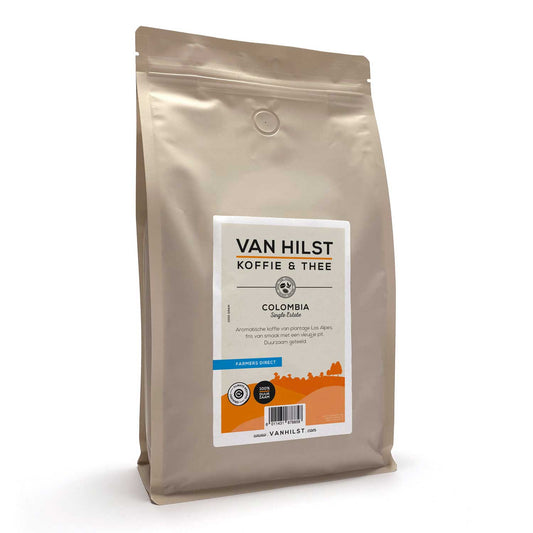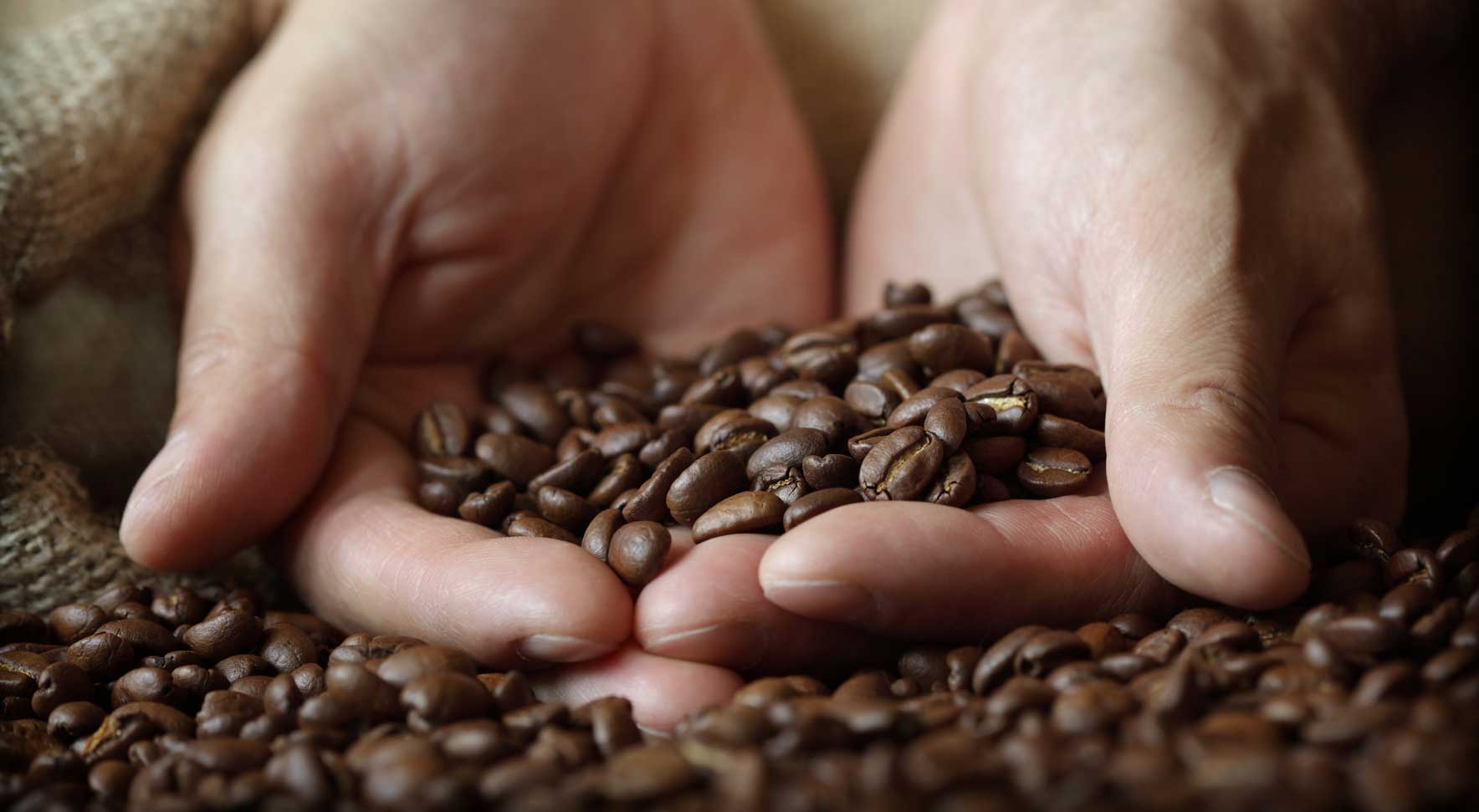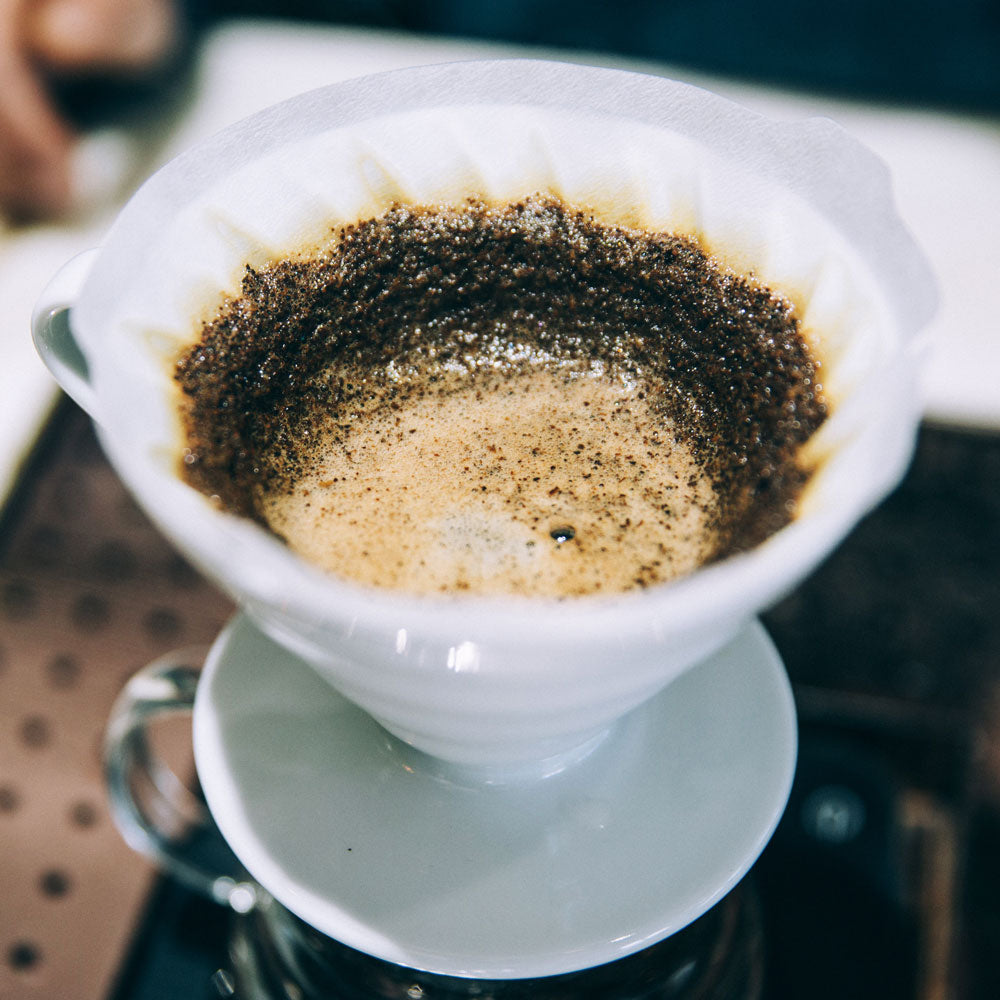
Pour over coffee (or Slow Coffee?)
Share

Pour over coffee is making coffee the classic way. With a separate filter holder (dripper) a filter bag, ground coffee, just boiled water and a glass jug or mug. Very easy to make and when you pour the hot water on the ground coffee, delicious aromas are released that spread throughout your home.
This way of preparing coffee is also called slow coffee, although “real” slow coffee requires a little more fine-tuning.
How do you make pour over coffee?
Do you want a jug of coffee or rather a cup? Depending on the amount of coffee, you can choose from different sizes of filter holders. There are drippers that fit a Melitta filter bag no. 4, but also where you can put filter bags no. 2. You usually use the no. 4 for a full jug and the no. 2 can be used for half a jug or for a separate bowl or mug.
The next step in making pour over coffee is to put the filter bag in the filter holder. Make sure that the filter bag is properly seated. Otherwise, the bag can suddenly fold in half when pouring. Then you can add the ground coffee. You can choose which flavor and how strong you want the coffee. In our range we have various coffees that are excellent for preparing in the traditional way. With the coffee of your choice, you can choose the 'hand-pour' grind setting. We then grind the coffee in such a way that you can enjoy it optimally with the pour over method.
Are you really going for fresh coffee aromas? You can also choose to grind the coffee beans yourself. You put the ground coffee with a measuring spoon in the filter bag. Meanwhile, turn on the kettle. When the water is boiling, let it stand for a minute. If you grind your own coffee, grind slightly coarser than the setting for the coffee maker (quick filter).
Pouring the coffee
Pour over coffee is made by carefully pouring the water that has just come off the boil onto the coffee in the filter bag. If the temperature of the water is too high, the coffee will become bitter. Between 90ºC and 95ºC is a safe margin.
First, pour a small splash of hot water on the coffee. This ensures that the coffee in the filter starts to swell for a while, which releases the aroma even more. If all goes well, air bubbles will also form and it will bubble gently.
Then pour the filter two-thirds full of hot water. Assuming that you are going to make a very full jug. Otherwise, you must of course adjust it to the amount of coffee you want. Let the hot water flow calmly through the filter and filter holder into the glass jug in one movement. That means you have to pour slowly. You don't have to do anything about it yourself. They don't call this way of preparing coffee slow coffee for nothing.
Slow Coffee

For real Slow Coffee, the recipe for brewing coffee has been further refined. All parameters (time, amount of coffee, temperature) are much more fixed and give you guidance to go a little further to extract flavor from your coffee.
You put slow coffee in a Chemex, for example. That is a specially designed jug in which you put a paper filter. This filter lets the water through more slowly than the usual Melitta filter.
Points of attention:
- You can pre-rinse your filter to get rid of your paper aromas. If you do this too short, you will get more paper aromas in your coffee, so try out what works best for you.
- Water temperature should not be too hot, max. 96ºC, but lower than 92ºC is not convenient, because then you get less aromas from your coffee.
- The starting point is 30 grams of coffee per 500 ml of water. You can of course vary according to taste per type of coffee.
With 50 ml of water you let your coffee swell for 30 seconds. The aromas come out. Then pour the remaining 450 ml of water through the filter in 4 minutes.
There are all kinds of beautiful things for sale to experience Slow Coffee. If you want to experiment inexpensively, you can always take a separate filter holder and Melitta filters to start with. You will also need a kettle and kitchen scale. A timer is in your phone. I find a digital kitchen timer more convenient.
Which coffee?

Last, but not least: you need good coffee for a good pour over coffee or slow coffee. Espresso coffee is blended and (dark) roasted for espresso machines, so I wouldn't take this for slow coffee.
Single Estate coffees are very suitable for this method because they have unique characteristics per country/plantation that you can taste in your filter coffee.
I'll name a few:
Ethiopia – floral, chocolate, sweet
Rwanda – orange, caramel
El Salvador – sweet, floral, honey

